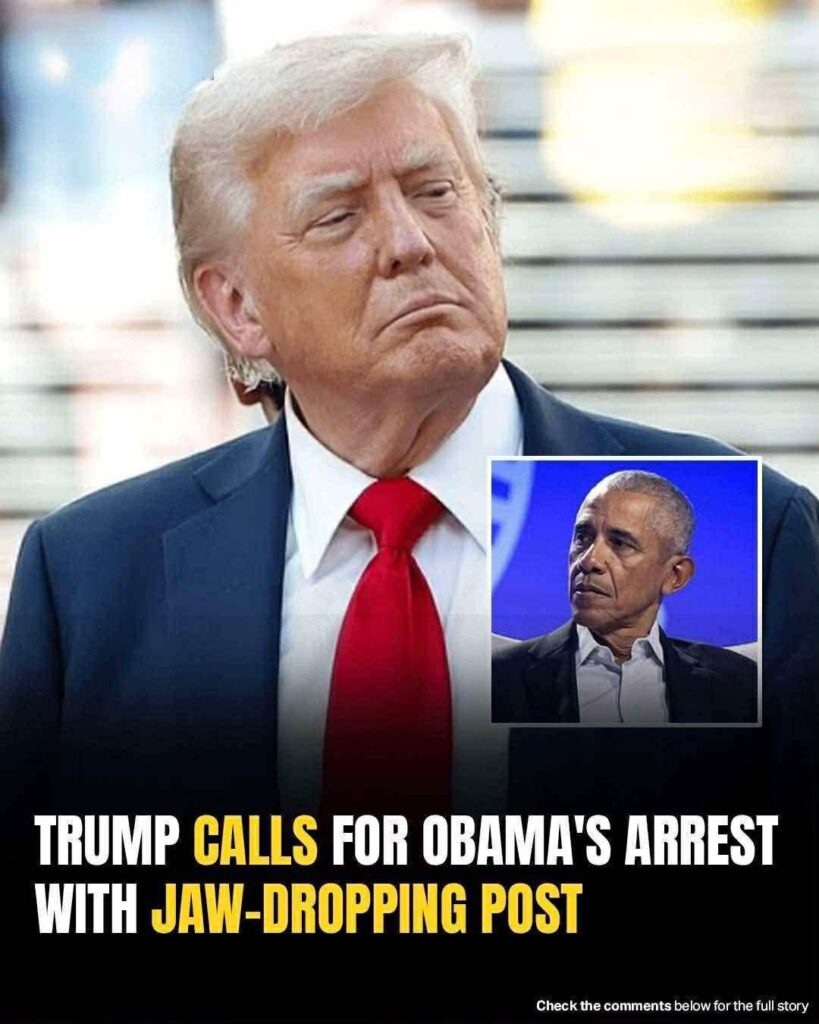I came home last weekend, intending to unplug for a few hours, when a push notification lit up my screen: “Trump reposts AI video of Obama on his knees.” I opened it, curious. What I saw left me unsettled—not just as an American, but as someone who’s watched politics evolve into something that often feels more like satire than statecraft.
Let’s be clear: the video, generated by artificial intelligence, depicts former President Obama being dragged out of a chair in the Oval Office and forced onto his knees before a laughing Donald Trump. It’s the kind of scene that would have been unthinkable a decade ago. But today, in a digital world ruled by clicks, memes, and rage, it barely made a ripple in some circles. That normalization? That’s the real danger.
Whether you laughed, rolled your eyes, or haven’t even seen it yet, this video deserves a second look. Because buried beneath the digital noise are three deeply troubling truths—about race, propaganda, and power—that should alarm every one of us.
1. It’s a R@cist Spectacle Disguised as a Joke
Imagine the most respected Bl@ck man in American politics—Barack Obama, a symbol of hope for millions—depicted kneeling before the man who succeeded him, grinning with delight. This isn’t just bad taste. It’s a loaded, calculated image.
Some will argue it’s satire. Others might say it’s just another Trump stunt. But there’s nothing benign about the symbolism here. This is a deliberate use of racial power dynamics designed to stoke the emotions of a particular audience—and it’s not the first time.
Back in 1915, President Woodrow Wilson hosted the first-ever film screening at the White House. The movie? The Birth of a Nation, a glorified tribute to the Ku Klux Klan. Over a century later, we’re watching a former president circulate digital propaganda not so different in intent, if not form.
Pastor Amos Brown of San Francisco—who studied under Martin Luther King Jr.—recently reminded me that these moments are never accidents. They’re tools. Fiction, whether on film or in a f@ke video, has always had the power to shape perception. And perception shapes reality.
Obama never wronged Trump. But to some, the very idea of a confident, dignified Black man in power is an affront. That’s the button this video presses—and that’s why it spreads.
2. AI Deepfakes Are Blurring the Line Between Fiction and Fact
It’s one thing to watch a Hollywood film and know it’s fictional. It’s another to see a video, perfectly lifelike, and not be sure. That’s the terrifying new frontier we’re entering with AI-generated content.
This isn’t Trump’s first foray into deepfa:kes. In 2023, he reshared a doctored image of Taylor Swift endorsing him (she didn’t). Elon Musk tweeted a fake photo of Kamala Harris in what looked like a communist military uniform. And earlier that year, a viral AI series showing Trump being arrested fooled millions—despite the odd detail that one version gave him three legs.
In isolation, these clips might seem like internet fodder. But collectively, they erode our shared sense of truth. They create a fog in which fact and fiction blend, making it easier to manipulate, divide, and control public opinion.
In countries already grappling with political instability, deepfakes have sown chaos and confusion. The U.S. is not immune. In fact, we may be more vulnerable—because we’re so saturated with content that we’ve become numb to it.
And here’s the thing: even if we know a video is fake, the emotional reaction it sparks is real. That’s what makes it so dangerous.
3. It’s Not Just a Video—It’s a Strategy
Some folks still insist Trump doesn’t think these things through—that he posts impulsively. Maybe. But intent isn’t the only thing that matters. Impact does.
Sharing a video like this isn’t just a stunt. It’s part of a broader effort to normalize the dehumanization of political opponents—especially those who are Black or brown.
Obama on his knees is an image that echoes other recent events. It mirrors the moment Latino Senator Alex Padilla was tackled by federal agents. It resembles scenes we’ve seen repeatedly of migrants detained, handcuffed, humiliated.
This is how normalization works: not with a bang, but with repetition. First, it’s just a meme. Then it’s a “joke.” Soon enough, the public becomes desensitized to the real thing. That’s how civil rights erode—not all at once, but pixel by pixel.
Pastor Brown put it simply: “The more things change, the more they stay the same.” R@cism hasn’t gone underground—it’s gone digital. And it’s being weaponized in new, sophisticated ways.
Trump may have Bl@ck supporters. He may show up at urban churches and speak about inclusion. But that doesn’t erase a pattern that stretches back to the Central Park Five and continues through to his campaign rhetoric about Black immigrants “eating cats and dogs”—yes, he said that in Ohio.
The truth is, r@cism doesn’t always show up in hoods and burning crosses anymore. Sometimes it shows up in retweets.
Why We Shouldn’t Shrug This Off
You might be tempted to scroll past stories like this. Another day, another Trump controversy. We’ve seen so much nonsense that it takes a lot to shock us.
But that’s exactly the problem.
These videos aren’t just weird, or offensive, or ridiculous. They’re desensitizing us to state-sponsored r@cism, political propaganda, and digital deceit. And that’s what makes them so effective. When we stop caring, when we stop noticing, that’s when they win.
This isn’t about Trump alone. It’s about the playbook. A playbook that uses digital tools, r@cial symbolism, and we@ponized “humor” to create division—and consolidate power.
So the next time a deepf@ke flashes across your screen, pause. Ask who benefits. Ask what it’s trying to normalize. And most of all—don’t look away.
Because when we stop being shocked by f@ke ar:rests, it’s only a matter of time before we stop being shocked by the real ones.


